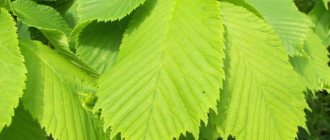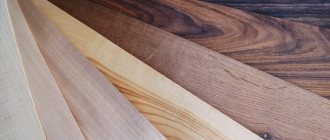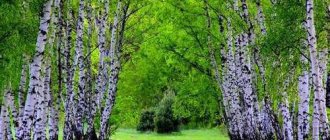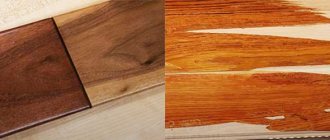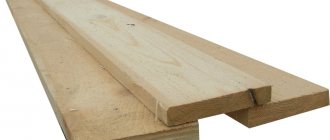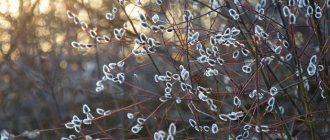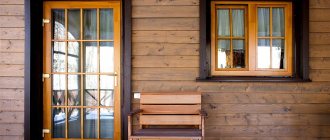The choice of trees for planting on a site takes into account the area of the territory and the preferences of the owner. For many generations of one family, the oak tree will be a symbol of longevity, strength, and power, especially since many species of this tree can grow in different climatic zones. In addition to the beauty of the trunk and carved leaves, the oak tree has a branched, powerful crown, under which all representatives of a large family can gather at a wide table. It’s good to relax under the shade of a tree and admire its colorful colors in autumn.
The powerful oak tree has more than six hundred species. They differ in the structure of the crown, leathery leaves, and their colors. Many of them are used in the design of city parks and squares, and garden areas. In addition to its mighty beauty, the tree has many useful properties. Oak bark is used to treat inflammation of the mucous membrane of various human organs. Even after standing near an oak tree for some time, you can calm down and put your nervous system in order.
The best oak varieties for the site
The tree's resistance to unfavorable climatic conditions is known. After all, he is not afraid of gusty winds, bitter frosts, or severe drought. Among the best oak varieties for planting in the garden you can choose the following:
- The white oak has a spreading crown, forming a lush tent. Decorative look in the colors of wide leaves. When blooming, the leaves on the branches are painted bright red; in summer they are light green, and almost white on the back. During the autumn months, the tree displays dark red foliage. The variety is not suitable for areas with severe frosts.
- Holm oak is highly resistant to frost. The leaves of this species are decorative - narrow, curly, yellow-variegated, ovate. Match the shape of the leaves and crown. Wood varieties are suitable for creating hedges and alleys. They look great in group and single plantings.
- The homeland of red oak is the north of the American continent, so it easily tolerates cold. The decorative nature of the tree lies in its spherical crown, reddish leaves, thin, with pointed blades.
- The most common species in European forests is pedunculate oak. This powerful beauty can reach fifty meters in length. Its dark green leaves and branches form a wide crown. The longevity of the species is amazing; some specimens are up to a thousand years old. Among the varieties of pedunculate oak, there are plants with a vertical, pyramidal crown and low growth.
A slender tree - swamp oak - reaches a height of twenty-five meters. Its pyramidal crown with young hanging shoots will decorate even a small area. The plant grows quickly in moist nutrient soils. The light green leaves, like wide lobes, turn purple in the fall.
For a large plot area, you can choose giants with a tent-shaped crown. Small slender oak trees are suitable for small areas. But all of them will improve the recreation area and the alleys leading to the house.
The most common types of oak trees
The red oak's natural habitat is eastern North America.
It is a tree 25 meters high, very fond of light, with dark green leathery leaves with pointed blades. This species is considered very decorative as the foliage turns orange and bright red in autumn. In old trees, leaves turn brown and yellow during this period.
Acorns appear in the second year of the tree's life. They are wide, ovoid in shape, and fit into a flat plus. Red oak loves light, especially illumination of the top of the crown, but easily tolerates lateral shading. Also undeniable properties of this plant are frost resistance, resistance to gases and poisons. This tree is a representative of those species that drown out city noise.
The second species - swamp oak - has a very slender, rounded crown, which becomes narrower as the plant ages. The average height of the tree is 25 m. There are no branches in the lower part of the trunk; it is branched evenly and quite densely. The leaves of the tree are very beautiful, shiny on both sides, lighter below and bright green above. This species is not as frost-hardy as red or petiolate. In severe winter frosts, young shoots often freeze slightly. In this case, although the acorns are set, they do not ripen and fall off.
In North America, the leaves are dark red, but in Moscow they turn yellow in autumn.
White oak is similar in leaf shape to swamp oak, but differs in its flatter, rounded top. The height of the tree is 25 m, the branches are very wide and spreading, the crown is tent-shaped. The bark of the tree is light gray, sometimes even white with cracks.
Towards the base, the leaves become narrow, deep, sometimes up to the midrib they are cut with narrow notches. When the leaves bloom, they have a bright red tint, slightly pubescent and silvery; at a more mature age they acquire a bright green color, slightly bluish below. In autumn, the foliage remains on the tree. This is one of the most beautiful oak trees in North America.
Large-fruited oak is common in the Great Lakes region, often reaching 30 meters in height and having a tent-shaped crown. The name of the tree is associated with the large size of the acorns. In Moscow conditions they do not ripen every year and one at a time. It grows quite quickly, is frost-resistant, but loves moisture very much.
The natural habitat of the Mongolian oak is the southern part of the Far East, but now it is also found in Korea, China and Northern Japan. This is a very beautiful tree, reaching 30 meters. Forms extensive forests on mountain slopes and along river banks. In autumn, the tree's leaves turn bright yellow-brown.
It loves sunlight and does not tolerate shading from above, but side shading, on the contrary, promotes rapid growth of the tree.
In Russia there is a serrated oak, which also grows in China, Japan and Korea. Prefers mountain slopes and dry hills. It is also photophilous, very resilient and tolerates drought quite calmly. Gives a very good offspring throughout the year.
Conditions for growing a tree
All varieties of oak, despite some external differences, can grow under certain conditions. Many of them cannot tolerate shaded areas, but prefer sunny ones. Only holm oak can grow in the shade of other trees. It is important to know that the root system and crown of an oak can reach enormous sizes, destroying even nearby buildings, sidewalks or concrete paths. The force of the roots can cause damage to the foundation of a house. Therefore, when planning to plant a tree, this must be taken into account.
The best place for the “giant” would be the far corner of the garden, where you can arrange a relaxation area for the whole family.
Moist soils with normal acidity levels are suitable for oak. Acidic soil is dangerous for them; because of this, a deciduous tree cannot coexist with coniferous specimens. And the soil hidden by fallen needles will not be able to provide sufficient moisture and nutrients to the deciduous tree.
Almost all types of oak easily tolerate low temperatures, but spring frosts often kill white and swamp oak seedlings. All this must be taken into account when purchasing a young tree. Fertile soils, more sunlight, space - these are the main conditions that are suitable for a giant oak.
Oak trees in landscaping
Oak is the basis of forest parks and large parks in those areas where there are conditions suitable for its development. When planted alone, the tree becomes wide and short, with a spreading crown. In close and group plantings, oak grows taller, slimmer and straighter. Decorative oak species are used in single stands, looking especially good with coniferous plants, while creating an elegant park landscape. Oak is often used for planting in alleys; the distance between trees should be about 6-8 meters. Oak trees have a very wide and spreading crown, which requires quite a lot of space, and this should be taken into account when wanting to plant a tree on a personal plot.
Oak propagation methods
If you want to have a magnificent specimen of a deciduous tree on your site, then you can grow it from an acorn. They are collected in the fall and kept in a cool place. You can plant them in pots with nutritious soil, and by spring tender sprouts will appear that can be transplanted to a permanent place.
Oak is characterized by long growth, so you need to be patient with your green friend and care for it properly.
But in the spring you can come across seeds that are starting to hatch slightly. The hole prepared in advance is filled with a soil mixture of one part sand, garden soil, and two parts humus. The acorn is buried 5-7 centimeters into the ground. The planting site must be watered regularly. Under good conditions, sprouts will appear quickly. All that remains is to organize careful care for them. Many gardeners prefer to purchase seedlings from nurseries. This method is the most accessible and effective. The young tree already has a strong root system; all that remains is to find a place for it on the site and plant it.
A young oak tree dug up in the forest will easily take root in the garden if you add soil taken from the place where it grew to the planting hole. The pit is prepared in advance by filling it with loose soil that is neutral in acidity. Attention to the seedling will reduce the time it takes for the sprout to adapt to new conditions and help it gain a foothold in a new place.
Application
When growing oak, gardeners involuntarily think about where this tree is used. Culture is actively used in various areas of human life. Almost all parts of the crop are used as material, including roots, leaves and wood. Plants not only provide decoration for gardens and parks, but are also used in farming and construction.
At home
Oak wood is considered one of the strongest and most durable, therefore it is actively used in the construction industry. The construction of oak furniture brings great profits, since it is one of the most valuable materials. The powerful trunks of young oak trees are used in the construction of houses.
Acorn nuts are also used in everyday life because they contain an abundance of starch and tannins. Acorns are used to feed livestock, especially pigs. In some plant species, the fruits are suitable for human consumption. In some countries, coffee is made from acorns.
Oak is considered one of the most active plants participating in the symbiosis of truffle mushrooms. Therefore, the crop is often used to grow one of the most expensive dishes in Europe.
In medicine
Oak bark is actively used in medicine because it has many beneficial properties. Tanning compounds allow you to solve problems such as:
- stomatitis and other inflammations of the oral cavity;
- diarrhea;
- mushroom poisoning;
- menstrual irregularities;
- inflammation of the liver and spleen;
- dysentery;
- haemorrhoids;
- nocturnal enuresis;
- eczema and other rashes on the body.
This abundance of diagnoses for which oak helps is due to the large number of beneficial properties of the plant. Oak has a great effect on relieving inflammation. Even a small amount of oak-based product can eliminate inflammation. In addition, oak has a pronounced diaphoretic, astringent, and antimicrobial effect. It has been proven that the plant has a disinfecting effect.
In folk medicine
In folk medicine, oak is considered one of the most valuable medicines, on the basis of which many recipes are prepared. Various diseases can be cured with infusion or decoction of oak bark or fruits, but remember that the remedies do not replace traditional medicine.
Recipes
- To treat inflammation of the oral cavity, prepare a decoction consisting of half a glass of boiling water and 5 g of dried crushed bark. The mixture is boiled for several minutes, then cooled and used to rinse the mouth.
- To prevent excessive sweating of the feet, use the following recipe: a decoction of oak bark, prepared from half a liter of water and 4 tablespoons of crushed medicinal raw materials, is brought to a boil and removed from the heat. The resulting mixture is used as a foot bath. The procedure is carried out daily throughout the month.
- To treat enterocolitis, prepare an infusion of acorns - dry crushed nuts are mixed with a glass of boiling water, adding 1 teaspoon to the liquid. The infusion is cooled, filtered and taken orally, half a glass three times a day. The product is also effective in the treatment of female cycle disorders and cystitis.
- Infusion of bark for diarrhea - 1 teaspoon of the crushed mixture is poured with half a liter of hot water and the mixture is allowed to brew for 6-8 hours. The mixture is filtered and taken warm, half a glass three times a day.
- Decoction lotions help fight purulent skin rashes. To do this, lotions from the decoction are applied to the affected areas of the skin.
- An infusion of oak bark, prepared from a glass of boiling water and a tablespoon of a medicinal mixture, infused for half an hour, helps with inflammation of the female genital organs. To do this, douching or rinsing, taking the drug orally.
Contraindications
Oak-based medicines have a fairly pronounced healing effect, so taking them without a doctor’s advice is dangerous. Although the plant is safe, it should not be used if you have allergies. In addition, the broth should not get into the eyes.
In landscape design
Oak trees are often found in park areas of urban areas. The plant is quite compact in size and unpretentious, and can also decorate a large space at once. Mighty plants remain decorative throughout the season. When planted alone, these are plants with thick trunks and a spreading dome-like crown. At the same time, by planting several oak trees nearby, straight and slender beauties with a lush and luxurious crown grow.
Interesting Facts
- Many people claim that acorns are nuts, but in fact they are single-seeded capsules.
- During strong winds, female flowers are easily held on the stem, while male flowers are weakly attached and fall off.
- Some oak acorns are used to make flour.
- There are oak trees with evergreen leaves.
- The bark is used to make stoppers for wine bottles and champagne.
- Oak wood is the only material from which barrels for storing wine are made.
- Only a few species of oak trees grow in the Southern Hemisphere.
Oak is a mighty tree capable of preserving the history of mankind. The plant has an abundance of species, but only a few dozen of them are grown. This culture is easily propagated at almost any time of the year, and is also used in many areas of human activity. The article helps with the question of how to properly grow a healthy tree on your site, as well as where it is better to plant an oak tree on your site and how to care for it.
Terms and rules for planting seedlings
Autumn during Indian summer is suitable for planting young oak trees. Before the onset of winter, the tree will become stronger and will be able to survive unfavorable times. In spring, they can be planted after warm weather has established, without severe night frosts.
- A drainage layer ten centimeters thick is laid at the bottom of the planting hole. This will help prevent moisture from stagnating and increase the permeability and looseness of the soil. And adding wood and deciduous mass will allow air to circulate freely. It is useful to add ammonia fertilizer to the hole.
- The seedling, together with a lump of earth on the roots, is placed in the recess of the hole. When falling asleep, the soil is compacted around the trunk using a mortar or a hand clenched into a fist. This must be done carefully, without damaging the delicate roots of the oak tree.
- In the first days after planting, the seedling will need to be watered. You can mulch the soil around the tree by adding a ten-centimeter layer of wood chips or peat.
- After planting the tree in the fall, it is covered for the winter by wrapping the trunk with burlap in one or two layers.
During the first years of the seedling's life, the root system will be strengthened. Only after one and a half to two years the oak tree begins to grow.
Is it possible to grow an oak tree from a branch or cutting?
It is possible to grow a good oak from a cutting, but it is better to use branches of a young tree. Breeders have found that annual tree cuttings take root better. However, practice shows that this method of reproduction rarely ends successfully.
The result is also affected by the time of cutting. Young branches should be dug in from the beginning of June to the end of July; cuttings from one-year-old branches take root better in the last days of May to mid-July.
To ensure that the cuttings take root well, you can use the stimulator Heteroauxin. If you are lucky, after 2 years the seedling will begin to grow; at first, all its strength is spent on root growth.
Care tips: watering, fertilizing, pruning
Caring for oak is not particularly difficult:
- The regularity of watering is determined by the dryness of summer or spring. If the drought period is long, then a bucket of water is poured per square meter of crown projection. Watering is especially important for young plants in extreme heat.
- Feed the tree twice. At the beginning of spring, a kilogram of mullein, ten grams of urea, and twenty grams of ammonium nitrate are diluted in ten liters of water and the area of the root circle is watered. In September, no more than twenty grams of nitrophoska are added.
- Weeds are constantly removed from around the tree and the soil is loosened to a depth of twenty-five centimeters.
- Crown pruning is carried out in autumn or early spring, during the dormant period, removing dried branches. In this case, the air temperature should not be lower than minus five degrees, otherwise the tree will freeze. The procedure is necessary to clean the trunk from top shoots. The tree crown is also formed by pruning. In the fall, 2-3 axial branches in the center of the crown are cut to a standard, shortening the lateral ones. On thick branches, cuts are treated with garden varnish or natural paint. In spring, the oak tree will be pleased with its spherical crown, and the height of the tree will decrease. If it is necessary to stop the growth of the giant in height, then the apical bud is cut off, pinching the central shoot. Thin shoots six centimeters in diameter must be removed from red oak trees.
Caring for oak is simple and does not require any material or time costs.
Forming an Oak Bonsai
The most difficult thing is shaping the Oak in Bonsai style. The massive and rough texture of the trunk, as well as large leaves, are an obstacle to formation.
Trimming
Oak has monopodial branching, meaning its main trunk continues to grow until the end of the plant's life. It dominates the side shoots. All species have a powerful straight trunk, occasionally several. You can slow down the growth of the trunk by removing the apical bud.
The beginning of spring awakens the appearance of numerous shoots at the ends of branches and the petioles of some last year's leaves. Allow them to develop until a few new leaves appear, then trim them off over the bud with a sharp blade.
Repeat this operation once every 2 weeks throughout the summer. Prune young shoots at any time of growth. Trimming growth along the crown promotes branching of the plant.
Regular pruning of leaves and branches gradually slows down the growth of the tree, and transverse notches on the oak trunk will further slow down growth.
As soon as the plant sap begins to circulate, from late winter to mid-spring, begin pruning the branches. At the same time, clearly highlight the branches of the first, second, and so on order.
Oak is a large-leaved plant. To reduce their size, it is necessary to perform certain procedures.
Complete pruning of green leaves (defoliation) is an important procedure in shaping the size of the leaves and crown of the entire Oak Bonsai. It is carried out at the end of June every 3 years. It is important to take into account that this procedure is used only for strong and healthy trees.
During defoliation, all leaves, even small ones and petioles, should be trimmed. Within a month, the tree will grow a new crown. However, new leaves grow rapidly and also need pruning.
Cut off the emerging leaves in half so that they look more harmonious on a small tree. Leaves need to be periodically reduced. This will slow down the growth of the Oak, and the leaves will gradually become smaller. As a result, their size will correspond to the overall size of the tree.
The optimal time for pruning large branches, as well as the main trunk, is late winter and early spring. In winter, they can be removed only if the temperature outside does not drop below -5°C. Lower temperatures can cause freezing of areas of wood and bark adjacent to the cut. In summer it is not recommended to prune large branches and trunk.
To give the trunk a spectacular knotted appearance, selectively cut off the bark with a blade.
Be sure to treat the cut areas of the bark, large branches and trunk with special healing agents. Japanese ones for Bonsai or any others sold in your region are best. This will help avoid rotting.
Wire
Bonsai oak is formed mainly by pruning. Because the hard wood makes it difficult to bend adult branches and especially the trunk by wrapping them with wire.
However, in order to give the branches the necessary direction of growth and curvature, it is still necessary to use wire. Copper or aluminum wire is ideal.
Apply it in late autumn, when the leaves have fallen. It is important that the wire remains on the tree for 1-2 years. At the same time, make sure that it does not start cutting into the bark. In this case, remove the old wire and rewind it.
When wrapping, leave the buds that have not been removed free so that leaves and branches can develop from them.
Diseases and pests of oak, combating them
The mighty tree is famous for its good health. But sometimes frost-damaged areas are found on the trunks of young oak trees. The affected areas treated with an antiseptic will heal quickly. Coating them with garden varnish will speed up the process.
What can a tree “suffer” from:
- Necrosis of branches and trunks is noticeable by the shedding of bark in the affected areas. The causative agents of the disease include species of condial and marsupial fungi. The consequences of the disease are the death of branches, even the death of the oak. Plants with mechanical damage are usually affected by the disease. A tree weakened by unfavorable climatic conditions - drought, severe frosts - is susceptible to pathology. You can save it by treating the cut areas with iron sulfate. The procedure is carried out in early spring before the buds open.
- Once under the bark of a tree, dropsy bacteria infect even mature trees. The swellings formed under the bark are filled with liquid. After the trunk cracks, the mucus flows out, forming brown spots on the bark. Periods of drought and rain, and sudden temperature changes are favorable for the spread of bacterial dropsy. Disease prevention includes timely pruning of dry branches, cleaning and destruction of cut shoots.
- Among the pests that attack the tree are gall midges, insects that look like tiny flies. By laying eggs inside a leaf, they infect the entire tree. At the oviposition sites, balls are formed in which harmful larvae hide. Treatment with pesticides will save the plant from insects.
- The oak barbel reaches 2-5 centimeters in length. His mustache is the same length. Insect larvae feed on wood, bast, and tree roots, gnawing out passages inside the trunk. You can destroy the longhorned beetle by spraying it once with Karate or twice with Karbofos.
- The green oak leaf roller is distinguished by its resemblance to small butterflies. Her front wings are light green, and her hind wings are light gray. Yellowish caterpillars eat the leaves of the tree, which stops the growth of the oak tree and destroys the harvest of acorns. The parasite appears in the first month of summer during high humidity and heat. You can destroy the leaf roller by spraying Karbofos and Decis twice.
Diseases and parasites affect weakened trees that grow with insufficient care.
More information can be found in the video:
Date: August 12, 2013 · .265
What kind of adaptations do plants to continue their species and disperse seeds ? There are parachutes, like those of dandelions, and tenacious spines (they stick to a person’s clothing or to the fur of an animal - and travel until they fall into the ground), like those of a string, a plantain. Light seeds of birch, pine, and spruce are carried far away by the wind over the snow crust.
Insects and animals (elephants, wild pigs, for example, are perhaps the only distributors of crushed fruits with seeds of the Rafflesia Arnoldi plant, which has the largest flower in the world. And this amazing plant grows on some islands in Southeast Asia) also distribute seeds many plants.
Many fruits are dispersed by birds. But what is it like for the oak tree? Round, smooth, large acorns are too tough for birds, and they are not able to cling to anything, and the wind will not carry them away.
However, young trees can often be found among pine plantings, where mature oaks are nowhere to be seen. It turns out that the oak tree has sowers.
Jays , making supplies for the winter, carry acorns over long distances, hiding them in moss or fallen pine needles. For jays living in the European part of Russia, Ukraine, and Belarus, the main food is acorns. The jay makes significant reserves of them for the winter, up to 4 kg. And then they forget about their pantries - can you really remember them all? So oak trees grow in the most unexpected places.
Description of the tree, its types and varieties
Oak is a tree belonging to the beech family. There are more than 500 varieties of this plant in the world. They differ from each other in the shape of the crown and leaves, as well as the color of the fruit. However, each variety has its own general characteristics that indicate its belonging to the genus.
- Size. Dwarf oaks do not exist in nature. All individuals have a height from 25 m to 45 m.
- Durability. Trees live for about 500 years.
- Leaves. The structure of the leaves depends on the variety. It can be lobed, pinnately separating, serrated, etc.
Relation to soil conditions
English oak, swamp and denticulate oak are demanding of the mineral and organic richness of the soil. English oak grows best on normally moist, deep gray forest loams and on alluvial soils in the floodplains of large rivers; worse - on highly podzol soils. With acidic humus, which is formed mainly with the participation of spruce, the oak dies, yielding dominance to the latter.
Large anther oak grows well in dry, fresh, fertile soils. The reaction of the medium varies from slightly acidic to alkaline. It does not tolerate even the slightest salinity and shading.
Swamp oak prefers moist soils, as it naturally grows in deep, moist soils of river banks and swamps.
Oak is red and is undemanding to soil fertility. The tree can withstand an acidic environment and should not be planted on calcareous or heavily moist soils.
Mongolian oak reaches its best development in fresh, deep and fertile soils. But it can grow on soils of a wide range of fertility, including poor rocky ones. Oak does not grow on swampy and constantly waterlogged soils with high acidity, as well as in systematically flooded floodplains.
Spreading
The habitat of oaks is considered to be temperate climatic zones and northern latitudes, in which the plant lives in mixed forests and also forms oak groves. There are single specimens of the plant. You can find oak trees throughout the European part of the plain, as well as in the Urals. Some species grow in tropical regions, as well as beyond the equator. The culture is found in the Caucasus and the East of Ukraine.
You can meet the culture in its natural growing conditions in the territory of ravines, along woodlands and on the edges of forests. Most varieties prefer the banks of rivers or streams. In addition, in some regions the culture grows and forms large forests consisting mainly of common oak.
Reproduction and cultivation
Oak can be propagated by rooting green cuttings, the result of which depends on the age of the mother plants. Cuttings from mature plants practically do not root, while cuttings from young plants take root quite successfully. For example, cuttings taken from annual plants rooted by 70-90%, while from biennial plants - by 30-70%.
Rooting is affected by the timing of cuttings. Cuttings of one-year-old seedlings took root well from the first ten days of June to the third ten days of July inclusive (rooting 60-95%). For 15-year-old plants, the best time for cuttings was May; when cuttings were taken in the second half of July, the cuttings did not take root. Heteroauxin at a concentration of 100 mg/l has proven itself well as a rooting stimulator.
Mongolian and English oak take root (12%) when treated with 0.01% and 0.05% indolylbutyric acid (IBA) solution. In Gartvis oak, 22% of summer cuttings treated with a 0.05% IBA solution take root, and in red oak - 30%.
Oak trees reproduce well by planting freshly harvested acorns. The beginning of the collection is considered to be September and October, and for some species even November. Acorns collected and sown in August have low germination rates.
Acorns are sown immediately after harvest in the fall, avoiding drying out. Within 10 days, germination is reduced to 50%, and after 20 days it is completely lost. The planting depth for large acorns is 8 cm, for small ones - 5 cm. When sowing in September, if the autumn is dry, the acorns should be watered. To protect against damage by rodents, the ridges are covered with spruce branches.
If it is not possible to sow acorns in the fall, then they must be dried to a humidity of 60%. A well-dried acorn should be as dry as possible, but the top should not separate. If this happens, then the acorns are overdried. It is better to store them until spring in a basement with moderate ventilation. For storage in the basement, acorns are placed in a box in layers: the first is 10 cm thick sand, the second is 2 cm thick acorns, the third is 2 cm sand. The second and third layers can be alternated 5 times. The sand humidity should be about 60%, and the temperature should be 2-5°C.
A small batch of acorns can be stored in the refrigerator in a bag with small breathing holes. The optimal storage temperature is 2-3°C. Storing them in an airtight or tightly closed container can lead to the death of the acorns. Periodically, once every 10 days, it is advisable to take them out and inspect them. If mold appears, the acorns must be washed, dried and put back in the refrigerator.
For winter storage, you can also bury acorns in the fall in the soil to a depth of at least 20 cm, covering the top with a sheet of waterproof material, leaving a layer of air between this sheet and the acorns and providing protection from mice. No special preparation of stored acorns is required before sowing in the spring.
After good storage in winter, when sowing in spring, mass shoots appear in about a month. During germination, the shell of the acorn cracks at the top, the cotyledons remain underground, and a white root appears outward. In two weeks it reaches a length of about 10 cm, only after which the stem is thrown out. In the first year, oak seedlings reach 10-15 cm in height. During a long summer, they often give a second growth in the second half of the summer, and then reach 20-30 cm in height. In the first year, oak seedlings form a taproot that goes deep into the soil up to 40-60 cm. In the future, it is very difficult to replant the seedlings without damaging the root. Therefore, to give the oak a fibrous root system, when the seedlings reach a height of 8-10 cm, the root is cut with a shovel. Subsequently, oak is grown in the first, second and often in the third schools.
In the first growing school, a tree trunk is first formed over 4-5 years. At this time, conditions are created for the growth of the central conductor (leader), directing basic nutrients into it with the help of various trimmings. The emerging shoots, competing with the leader in terms of growth force in length or thickness, are cut into a ring. To grow the leader in thickness in diameter, thickening shoots are used. They develop on the stem along the entire length of the planned trunk. Thickening shoots are obtained by pinching the lateral branches formed on the stem in mid-May, when their length reaches 20 cm. Thickening shoots are left 10 cm long. Thickening shoots are kept on the trunk until it reaches the standard size. After this, the shoots are cut out. In oak, the trunk thickens quickly, especially in the lower part, so the tree is left with a small number of thickening shoots, mainly in the upper part of the trunk. First, thickening shoots are removed from the lower third of the trunk, the next year - from the middle part of the trunk, and the rest - in the third year. In the second school the crown is formed. To establish the crown, measure the height of the trunk, count 5-7 buds, and cut off the leader shoot above the counted bud. The next year, before the start of the growing season, the growths that have developed from the left buds are also cut off by 5-7 buds, external to the axis of the trunk. The growth located higher along the trunk is cut one internode higher than that located below. This pruning helps to obtain a uniformly developed crown. From the buds remaining on the skeletal branches of the first order, branches of the second order develop. Oak is grown in nurseries until the age of 20 years and is planted as a tree about 8 m tall with a well-formed crown.
Features of caring for Oak Bonsai
Despite the lush crown, thick, immense trunk and enormous height in natural conditions, Oak is easy to grow in an apartment. The art of Bonsai makes it possible to maintain it at home. However, growing a miniature tree will require knowledge, strength and patience!
Temperature and wintering
Oaks are cold-resistant, love warmth and are afraid of spring frosts. They prefer a mild and humid climate. However, Bonsai Oak is not particularly picky about temperature and humidity.
Not afraid of drafts. He needs fresh air and regular ventilation. Otherwise, the tree will be susceptible to various dangerous fungal diseases.
During the warm season, move the bowl with the plant outside or to an open balcony. The tree feels good at an air temperature of +18...+25°C.
Wintering for oak is required from November to March. It tolerates low temperatures perfectly. In winter, move the bowl to an unheated loggia, terrace or basement and keep it at a temperature of 0...+10°C.
If Bonsai winters outside, in order to successfully survive the winter, bury the container with the tree in the ground and additionally cover the root system with fallen leaves or mulch. The root system of Oak trees is quite sensitive to sudden temperature changes and severe frosts.
Lighting
A sunny location is preferable, as the tree is quite light-loving. In this case, the Oak produces smaller leaves with shorter petioles. In addition, in the sun the tree is less affected by powdery mildew and fungal diseases.
At the same time, it is better to shade the tree from the bright midday sun so that the foliage does not burn or dry out.
Plants standing nearby should not cast a shadow on it.
When kept at home, from March to November, additional lighting with a phytolamp or LED lamp is required.
It is preferable to place the Bonsai on the west or east side, then the sun's rays will illuminate it in the mornings or evenings.
Also note that Bonsai from Common Oak (forest tree) must be placed in partial shade, and it is advisable to place Fluffy Bonsai on the north side, but closer to the light.
During wintering, natural lighting or additional illumination with a phytolamp for 5-6 hours in a dark room is sufficient for the tree.
Watering
In summer, Oak requires moderate watering. It is important to ensure that the soil in the container does not dry out or become crusty.
The most suitable time for watering in summer is early morning before 9 o'clock, in May, and in September until 10 o'clock.
Avoid getting water on the leaves of the tree. This can lead to powdery mildew and sunburn of leaves.
In rainy weather, move the plants to a dry place. A humid location in the second half of summer also contributes to powdery mildew attack on leaves.
In winter, Oak Bonsai requires virtually no water. However, if it overwinters at home, make sure that the soil does not dry out.
For irrigation, use settled tap water. Tolerates watering well with hard water. However, in this case you need to water from below. Hard water leaves an unsightly limescale deposit on the trunk. To do this, lower the container with the plant into a basin of water so that the water does not reach the base of the trunk.
Spraying
Oak Bonsai does not need spraying. This can also contribute to the appearance of powdery mildew on the leaves.
However, when kept at home, especially during the heating season, Bonsai may suffer from a lack of humidity. To solve this problem, place the plant container on a tray filled with water.
Spraying the tree with water every day during this period will also provide sufficient moisture for the whole day.
A good solution would be to use a humidifier to create air humidity of 50-60%.
Top dressing
Every month from April to the end of August it is necessary to provide additional fertilizing with mainly organic and mineral fertilizers for Bonsai or decorative foliage plants.
Since fertilizing is needed not for growth, but for strengthening and thickening the trunk, DO NOT use nitrogen fertilizers.
Feeding young trees will speed up the process of Bonsai formation. Fertilize mature oak trees moderately or not at all. You may get an unpleasant effect in the form of the growth of large leaves and branches.
Bonsai should also be fertilized in the fall if replanting is planned for the next season.
Priming
An important point is the composition of the soil for Oak Bonsai. Use nutritious, breathable clay and compost. At the same time, the soil must be able to hold enough moisture to supply it between waterings.
Soil acidity is weak or neutral (pH 5.5-7.5).
For young trees, use a mixture of 2 parts clay granules (Akadama) and one part rotted leaf soil.
For adults, use a soil mixture of 9 parts clay granules (Akadama) and 1 part well-rotted compost.
When planting and replanting Bonsai, you can use a soilless substrate (fraction of all components is 2-4 mm):
- Peat - 30%
- Perlite or Vermiculite - 10%
- Akadama or Zeolite - 35%
- River sand – 20%
- Charcoal - 5%
For drainage, use a 1 cm layer of coarse river sand (2-4 mm grain size).
Transfer
A very important point is to use tall (minimum 8 cm) Bonsai containers. This is important because oaks actively develop vertical taproots and therefore do not tolerate very low containers.
To slow down the growth of a tree, replant it every 2-3 years, cutting off overgrown roots and shortening the central one. Leave small root shoots, up to 10-15 cm long.
Transplant and plant in April-May or October-November.
The root collar should be level with the ground - this is very important for Oak! Planting below ground level means dooming the tree to suffering and inevitable death over the next few years.
Be sure to place a layer of drainage at the bottom of the pot. Use expanded clay, coarse sand or fine gravel (fraction 2-4 mm). After planting, it is advisable to cover the soil with moss.
Cleaning
Periodically clean the tree trunk with a soft brush, or a toothbrush. Remove dried branches and leaves in a timely manner. Trim off unnecessary shoots.
Dry leaves that have not separated from the branches at the beginning of the new season should be removed to prevent the spread of the fungus. Leaves that have dried out in autumn should not be removed from some non-shedding Oak species. Their dry leaves do not fall off until new shoots of leaves bloom in the spring.
Trimming
Oak has monopodial branching. This means that the main stem grows at its apex until the end of the plant's life, having unlimited apical growth that dominates the growth of lateral shoots.
All types of oak trees form a powerful straight trunk (sometimes several), which continues to grow throughout the life of the tree. The growth of the crown can be limited by timely pruning of oak branches, which is carried out every 2-3 years. The formation of the ground part of the tree involves various methods of pruning oak branches.
Removing the apical bud slows down the growth of the trunk in height. Also carried out is pinching the shoot (removing the tip), shortening the shoot or branch, cutting out the branch or shoot. Trimming only the growth along the entire crown promotes branching and excessive thickening. When pruning shoots, the length of the cut part depends on the speed of their growth. When part of the growth and entire branches are removed, the crown becomes openwork and even allows a certain amount of sunlight to pass through.
The optimal period when you can prune an oak tree is the end of winter and early spring. Removing branches in winter is possible if the outside temperature does not fall below -5°C. At lower air temperatures, freezing of areas of bark and wood adjacent to the cut is possible. It is necessary to prune a tree in summer with caution; you cannot cut out many branches at this time of year.
When carrying out sanitary pruning, tree branches that are diseased, drying out, mechanically damaged and growing inside the crown are cut out first (from mid-February to mid-April and in the second half of summer, when shoot growth is completely completed).
Botanical characteristics
Description
Oak (lat. Quércus) is a genus of trees and shrubs of the Beech family (Fagaceae). The genus consists of more than 600 species. Fully hardy as an ornamental tree, but needs protection from severe frost when grown as a Bonsai.
The small leaves of some species, the tendency to form massive trunks and the rough texture of the bark give the appearance of a huge old tree in miniature. However, the species that are most suitable for Bonsai do not come from Japan, which is why Oak is not a traditional tree for the art of Bonsai.
Almost all types of Oak can be used to grow good Bonsai. However, we will highlight three of the most suitable evergreens:
- Cork (Quercus Suber). The trunk, which is distinguished by a thick layer of bark, grows quite quickly.
- Stone (Quercus llex). It has smooth, dark gray bark and an ovoid or tent-shaped crown.
- Californian (Quercus agrifolia). It is drought-resistant, does not freeze even in harsh winters, and blooms well every year.
Of the deciduous species, the following three species are suitable:
- White (Quercus pedonculata). The trunk is straight, thick and short, the branches are large, thick, twisting and angular.
- Common (Quercus robur). The trunk is straight, cylindrical, tapering towards the apex.
- Fluffy (Quercus pubescens). The trunk is short, twisted, the top is irregular in shape.
The common deciduous species in Belarus are Ordinary, Petiolate and Skalny.
Most Oaks are healthy, dense trees. Under natural conditions, growth is capable of reaching significant height and crown spread. The trunk and branches have very hard and powerful wood. While the bark consists of many grooves and cracks. The leaves are divided into more or less pronounced lobes.
Oaks are slow growing trees.
In spring, elongated yellowish inflorescences appear on the trees, which after fruiting turn into acorns. The flowers are small, unisexual: male and female on the same plant.
Places of distribution
The birthplace of Oak is considered to be Europe and North America. The natural habitat is regions of the Northern Hemisphere with a temperate climate. The southern limit of distribution is the tropical highlands; several species are also found south of the equator.
detailed information
Habitats
English oak grows in Western Europe and the European part of Russia, Africa and western Asia. It is one of the most common species of broad-leaved forests in Europe. The range of pedunculate oak extends to the east to the Urals, in the south to the mountainous regions of the Crimea and the Caucasus. It is adjacent to spruce, pine, hornbeam, ash, birch, maple, and beech. Young oaks are shade-loving. They are not picky about the soil.
Application
Leaves, acorns and bark of the pedunculate oak are used in medicine. The bark is harvested during sap flow. Young trees intended for felling at logging sites are suitable for this purpose. Dry the bark outdoors under a canopy or in a frequently ventilated area. Dry bark breaks when dried, undried bark bends. If during drying this raw material is subjected to excessive waterlogging, a significant part of the tannins contained in it will be lost. The shelf life of dried bark is 5 years. Oak fruits are harvested in the fall, immediately after falling. Dry under a canopy in a well-ventilated area. The attic is also suitable for this purpose. The acorns are spread in one layer on paper, stirring them from time to time. Dry in ovens or dryers. After this, the leathery fertilization and seed coat are removed. Finished raw materials are stored in bags. The shelf life is unlimited.
Use in medicine: English oak bark is widely used in medicine as an astringent, anti-inflammatory and antiseptic. A decoction of the bark is used for inflammation and gum disease, stomatitis, sore throat, and also to eliminate bad breath. Compresses are applied for burns, frostbite, ulcers, wounds, dermatitis and other skin diseases. An infusion of oak bark is drunk for diarrhea, gastrointestinal bleeding, and heavy menstruation. Dried and crushed oak seeds help with diarrhea and cystitis. Surrogate coffee is processed from oak seeds, which has medicinal properties. This drink is effective for diseases of the gastrointestinal tract, rickets, anemia and scrofula. Infusions and decoctions of oak leaves treat diabetes.
